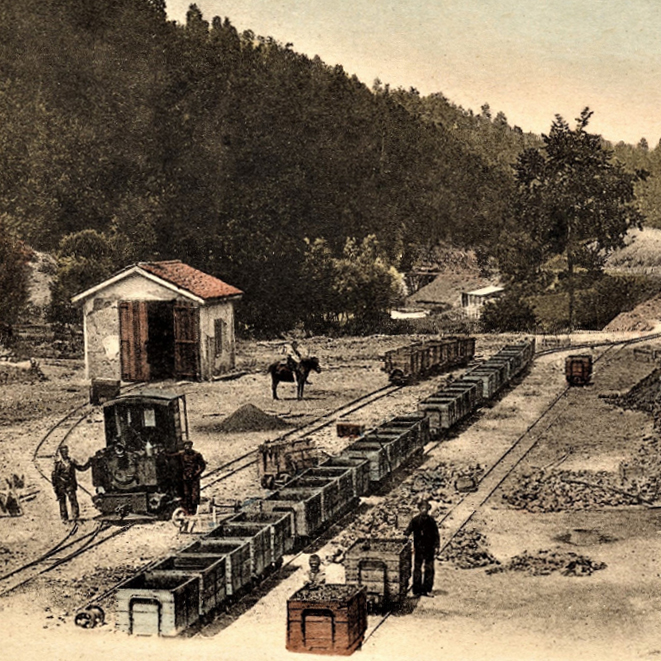ON THE INDUSTRIAL HISTORY OF KOSOVO
The country has plains of fertile farmland and rich deposits of ores and lignite, but it has never managed to get sustainable development off the ground. The smallest state in the Balkans has therefore also been the poorest for a long time.
Ore mining began in prehistory and was intensified under Roman rule. In the Middle Ages, Kosovo developed into the flourishing centre of the kingdom of the Serbian Nemanjids. The successful silver and lead mines in Janjevë and especially in Novobërdë even attracted miners from Saxony. The present-day capital Prishtinë became a trading hub between the inner Balkans and the coastal cities on the Adriatic. However, the Battle of Kosovo in 1386 (Alban. Fushë Kosova) triggered a dramatic decline. After the victorious Ottomans incorporated the country into their empire, it sank into insignificance.
The country’s small-scale agriculture served only for self-sufficiency and did not generate any investment funds. Even the opening of a railway connection from Mitrovica via Prishtinë to the Greek trading port of Salonika in 1874 did not bring about any improvement. A modest economic revival only began when Kosovo became part of the "Empire of Serbs, Croats and Slovenes" founded in 1918. In 1929, the first hydroelectric power plant was built in Prizren, which has since been converted into an electricity museum. A British company invested in the extraction of lead, zinc and other raw materials in the Trepça mine complex. The Sharrcem cement factory, still active today, started operations and the railway network was expanded.
Nevertheless, Kosovo was still a backward agricultural country when it was integrated into the Socialist Federal Republic of Yugoslavia in 1945. Although the leadership in Belgrade was committed to promoting backward parts of the country, significant support for the poorest region in the poor south of the state did not begin until the 1960s. In accordance with socialist economic doctrine, investments flowed mainly into heavy industry: the government intensified the mining of the large lignite deposits, and the electricity generated from it was exported on a large scale. The Trepça mining combine was expanded and the extraction of bauxite and nickel ores began. An industrial area was built in Prishtinë, and in 1970 the university opened. Companies such as the steelmill "Llamkos Galvasteel" or "Ferronikeli", producers of special iron alloys, were soon regarded as Yugoslavian model companies. However, as the other parts of the country prospered more, Kosovo fell further and further behind the Yugoslav average.
In the 1970s, the weaknesses of the Yugoslavian concept became obvious: rising unemployment, overcapacity and a backlog of modernisation. In addition, Kosovo itself had hardly any plants for the processing of its raw materials, so that the industry collapsed after the disintegration of the Socialist Republic of Yugoslavia in 1992. At the same time, the conflict between the predominantly Albanian population and the Serbian minority, which had been smouldering for centuries, escalated. With the gradual secession from Serbia, which led to the Kosovo war and finally to the country's declaration of independence in 2008, the economic crisis worsened.
Related Link
Kosovo was part of the 'Socialist Federal Republic of Yugoslavia', which disintegrated since 1991.
Therefore, for completeness, please also read our articles on the industrial history of the other states that were formerly part of Yugoslavia.
Bosnia and Herzegovina
Croatia
Montenegro
North Macedonia
Serbia
Slovenia


